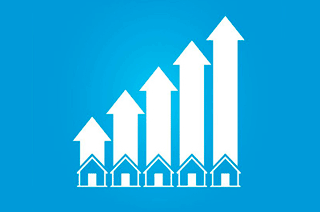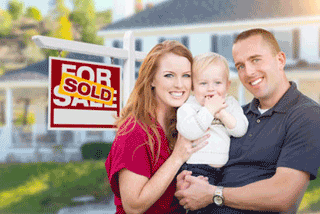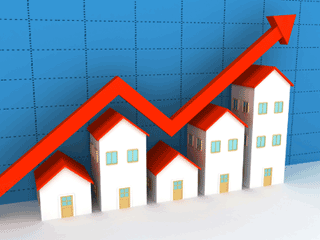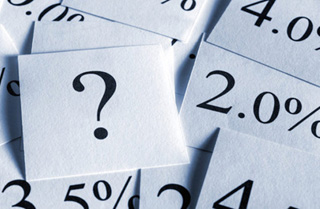Quote of the Week
“Investors are a momentum-driven demographic. They come into the market when the market is rising, and they leave pretty quickly when the market’s falling. So there is every chance investors will intervene in 2021.”
SQM Research managing director Louis Christopher
Prices Rose In 7 Cities In 2020
 Seven of the eight capital cities delivered growth in their house prices during 2020, according to the latest data from CoreLogic.
Seven of the eight capital cities delivered growth in their house prices during 2020, according to the latest data from CoreLogic.
The price increases were highest in Darwin, which grew 12% last year, followed by Canberra’s 8.5%, Hobart’s 7.7% and Adelaide’s 6%. Melbourne was the only city to record a decline in its median house price, down 2% in 2020.
Sydney (up 4%), Brisbane (4.6%) and Perth (2%) all recorded moderate growth in their house prices, in a year when most of the nation’s cities defied the pandemic and its negative economic impacts.
The average growth figure for the combined capitals was reported by CoreLogic as 2.6%, a number that seems unreasonably low given that six of the eight cities had growth considerably higher than that.
Apartment markets did not fare as well as houses, with four cities delivering price growth, two recording no change and two (Brisbane and Sydney) having small declines in their median unit prices. The combined cities average was a rise of 0.2% in 2020.
Regions Outperform Big Cities
 Regional property markets across Australia out-performed the capital cities on price growth in 2020 – and by a considerable margin.
Regional property markets across Australia out-performed the capital cities on price growth in 2020 – and by a considerable margin.
CoreLogic data shows that the result for the Combined Regions was a rise of 7% for houses and 6% for units, compared to 2.6% and 0.2% for the Combined Capital Cities.
House prices rose 12% in Regional Tasmania (compared to 7.7% in Hobart), 8.8% in Regional NSW (compared to 4% in Sydney), 7.8% in Regional South Australia (compared to 6% in Adelaide), 7.3% in Regional Queensland (compared to 4.6% in Brisbane) and 5.5% in Regional Victoria (compared to a 2% decline in Melbourne).
Unit markets also did well in the regions, with price increases headed by South Australia (up 11.7%) and Tasmania (up 10.5%). NSW, Victoria and Queensland all recorded unit price rises between 5.5% and 6.5% in the regional areas.
The only regional market to record price decline was Western Australia, which dropped both for houses and for units.
It’s The Time Of the FHB
 Last year saw what Domain has described as “the biggest entry-level property buying spree in a decade”, with 2020 becoming the year of the first-home buyer.
Last year saw what Domain has described as “the biggest entry-level property buying spree in a decade”, with 2020 becoming the year of the first-home buyer.
Rising dwelling prices early in the year discouraged many, says domain.com.au, but a raft of government incentives meant FHBs entered the market at the highest levels since 2008. It’s been an opportunity for those who kept their jobs to snap up their first home in the absence of investor competition.
The year started with the First Home Loan Deposit Scheme, with the Federal Government offering 10,000 FHBs the opportunity to buy with a 5% deposit, without paying mortgage insurance.
The first 3,000 spots with the major banks were taken in 10 days, with the other 7,000 spots with 25 smaller lenders gone by May. A further 10,000 places were offered in July, with fewer than 200 left by December. Then came HomeBuilder, which could be accessed on top of existing FHB grants and stamp duty concessions.
Double-Digit Growth Forecast
 Property prices are predicted to rise by 10% or more in most capital cities this year, as smaller cities outpace Sydney and Melbourne.
Property prices are predicted to rise by 10% or more in most capital cities this year, as smaller cities outpace Sydney and Melbourne.
CoreLogic’s latest house price data shows that all cities except Melbourne, as well as most regional markets, recorded solid to strong growth in 2020. This momentum is expected to continue into the New Year.
AMP chief economist Shane Oliver says the current growth trends will continue through the first half of 2021.
“I see gains in prices propelled by low interest rates, government incentives and easy lending standards,” Oliver says. “But that masks a huge divergence, with suburban houses doing better than units in inner-city areas, and lagging cities like Perth playing catch-up.”
SQM Research expects house prices to rise the most in Perth (12%) and Adelaide (10%). Sydney could rise by 7% to 10%, Melbourne between 2% and 6%, and Brisbane 4% to 8%.
SQM managing director Louis Christopher says investors, who were largely absent in 2020, will be more evident this year.
Rate Apathy Costs Consumers
 Home-owners rank paying off their mortgage as their greatest life priority, yet over 50% don’t know the interest rate on their home loan.
Home-owners rank paying off their mortgage as their greatest life priority, yet over 50% don’t know the interest rate on their home loan.
Research commissioned by Mortgage Choice finds a disconnect between the increased financial concerns borrowers are experiencing from the pandemic and knowledge of whether their interest rate is competitive.
Only 46% of respondents know their current interest rate. Mortgage interest rate apathy appears to be increasing, with fewer Australians knowing their rate in 2020 compared to previous surveys (61% in 2018 and 71% in 2016).
This comes at a time when the pandemic has put more people under financial pressure. Over 62% of Australians say the pandemic has caused them to worry more about money, with 66% trying to save more, spend less and improve their financial knowledge.
Mortgage Choice CEO Susan Mitchell says: “It’s so important to know your interest rate because the chances that you are paying too much are extremely high.”




